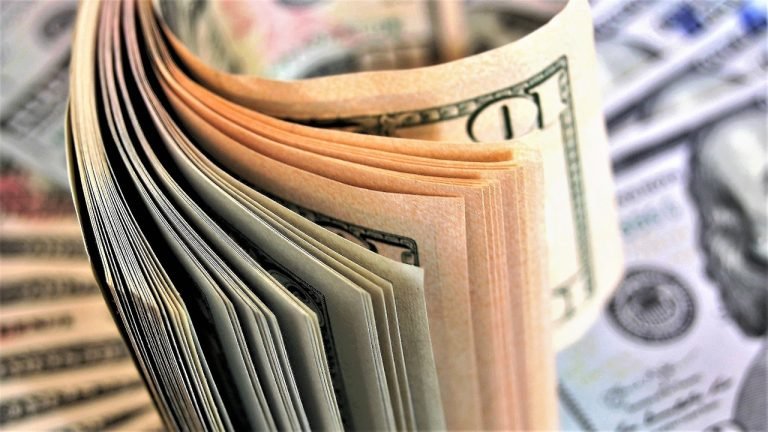The Long-Term Financial Implications of Student Loan Default and Recovery Options
The Long-Term Financial Implications of Student Loan Default and Recovery Options
In the ever-evolving landscape of higher education, student loans have become a pervasive aspect of pursuing academic dreams. While these loans serve as a gateway to education, the long-term financial implications of defaulting on them can be profound. In this comprehensive guide, we delve into the intricate web of consequences associated with student loan default and explore viable recovery options.
Understanding the Domino Effect of Student Loan Default
The Credit Conundrum
When a borrower defaults on their student loans, the repercussions extend beyond the financial realm. One of the immediate challenges is the impact on their credit score. A plummeting credit score can hinder future financial endeavors, affecting the ability to secure loans for a house, car, or even employment prospects.
Escalating Debt and Interest
Student loans, if left unattended, can snowball into an insurmountable mountain of debt. Defaulting triggers the acceleration of this process, leading to accrued interest and penalties. The compounding effect can exponentially increase the total amount owed, creating a financial quagmire for the borrower.
Navigating the Recovery Maze
Loan Rehabilitation Programs
For those grappling with default, loan rehabilitation programs can offer a glimmer of hope. These programs allow borrowers to rectify their defaulted status by making a series of agreed-upon payments. Successful completion of the rehabilitation program can reinstate the loan, erasing the default status and alleviating some of the associated financial burdens.
Loan Consolidation: A Pragmatic Approach
Consolidating student loans presents another avenue for recovery. By combining multiple loans into a single, manageable entity, borrowers can streamline their repayment process. This not only simplifies financial management but also provides the opportunity to negotiate more favorable terms, such as lower interest rates.
Income-Driven Repayment Plans
Acknowledging the diverse financial circumstances of borrowers, federal student loan programs offer income-driven repayment plans. These plans tailor monthly payments based on the borrower’s income and family size. For those facing financial hardships, this approach provides a more sustainable and realistic path towards debt repayment.
Legal Ramifications of Student Loan Default
Wage Garnishment
The legal consequences of student loan default can be severe, with wage garnishment being a potential outcome. Lenders may seek court orders to deduct a portion of the borrower’s wages to satisfy the outstanding debt. This can significantly impact disposable income, making it crucial to explore alternative solutions before reaching this stage.
Asset Seizure: A Last Resort
In extreme cases, lenders may resort to seizing assets to recover defaulted student loans. While this is a last resort, it underscores the gravity of the situation. Protecting assets becomes paramount, and borrowers are urged to seek professional advice to navigate this complex legal landscape.
Proactive Measures to Avoid Default
Financial Literacy Education
Preventing student loan default begins with fostering financial literacy. Educational institutions and lenders must prioritize equipping borrowers with the knowledge and skills needed to navigate the complexities of loan repayment. By fostering a culture of financial responsibility, the likelihood of default diminishes.
Timely Communication with Lenders
Open communication with lenders is pivotal in mitigating the risk of default. Borrowers facing financial hardships should promptly contact their lenders to explore viable solutions. Many lenders offer forbearance or deferment options to temporarily alleviate financial strain, underscoring the importance of proactive communication.
Strategies for Long-Term Financial Stability
Building a Robust Financial Foundation
Budgeting Wisely
A cornerstone of avoiding student loan default is cultivating sound financial habits. Budgeting becomes a crucial skill, allowing borrowers to allocate funds strategically and prioritize debt repayment. Creating a comprehensive budget that factors in essential expenses, loan payments, and savings is instrumental in achieving financial stability.
Emergency Fund: A Financial Safety Net
Establishing an emergency fund acts as a buffer against unforeseen circumstances that may jeopardize financial stability. A robust emergency fund provides a safety net, preventing individuals from resorting to drastic measures in times of financial distress. This proactive measure can be a game-changer in avoiding the domino effect of default.
Seeking Professional Guidance
Financial Counseling
Engaging the services of a financial counselor can provide invaluable insights into navigating the complexities of student loan repayment. These professionals offer personalized advice, helping borrowers assess their financial situation, explore repayment options, and develop a tailored strategy for long-term success.
Legal Assistance
In cases where default seems imminent, seeking legal assistance becomes paramount. Legal professionals specializing in financial matters can guide borrowers through the intricacies of debt resolution, exploring avenues to protect assets and minimize the impact of default on credit scores.
Empowering Borrowers Through Education
Promoting Financial Literacy
Educational institutions and financial entities play a pivotal role in promoting financial literacy. By integrating comprehensive financial education into curricula and outreach programs, students can graduate with a heightened awareness of the responsibilities and implications of loan repayment.
Raising Awareness About Repayment Options
Many borrowers are unaware of the myriad repayment options available to them. Enhancing awareness about loan repayment alternatives can empower individuals to make informed decisions about their financial future. This includes disseminating information about income-driven repayment plans, loan forgiveness programs, and deferment options.
The Human Side of Student Loan Default
Mental Health and Financial Stress
The toll of student loan default extends beyond financial ramifications; it takes a toll on mental health. Acknowledging the psychological impact of financial stress is crucial. Institutions and support networks must recognize the need for mental health resources and counseling services to assist those navigating the emotional challenges associated with default.
Community Support Networks
Fostering a sense of community support can be instrumental in mitigating the isolation often experienced by those facing financial difficulties. Establishing support networks within educational institutions and online communities allows individuals to share experiences, insights, and advice, creating a supportive ecosystem for those dealing with the repercussions of student loan default.
A Roadmap to Financial Redemption
In summary, the long-term financial implications of student loan default necessitate a holistic approach. From proactive financial management and seeking professional guidance to promoting financial literacy and fostering community support, the journey to financial redemption is multifaceted. By implementing these strategies, individuals can not only avoid the pitfalls of default but also pave the way for a financially secure future.




